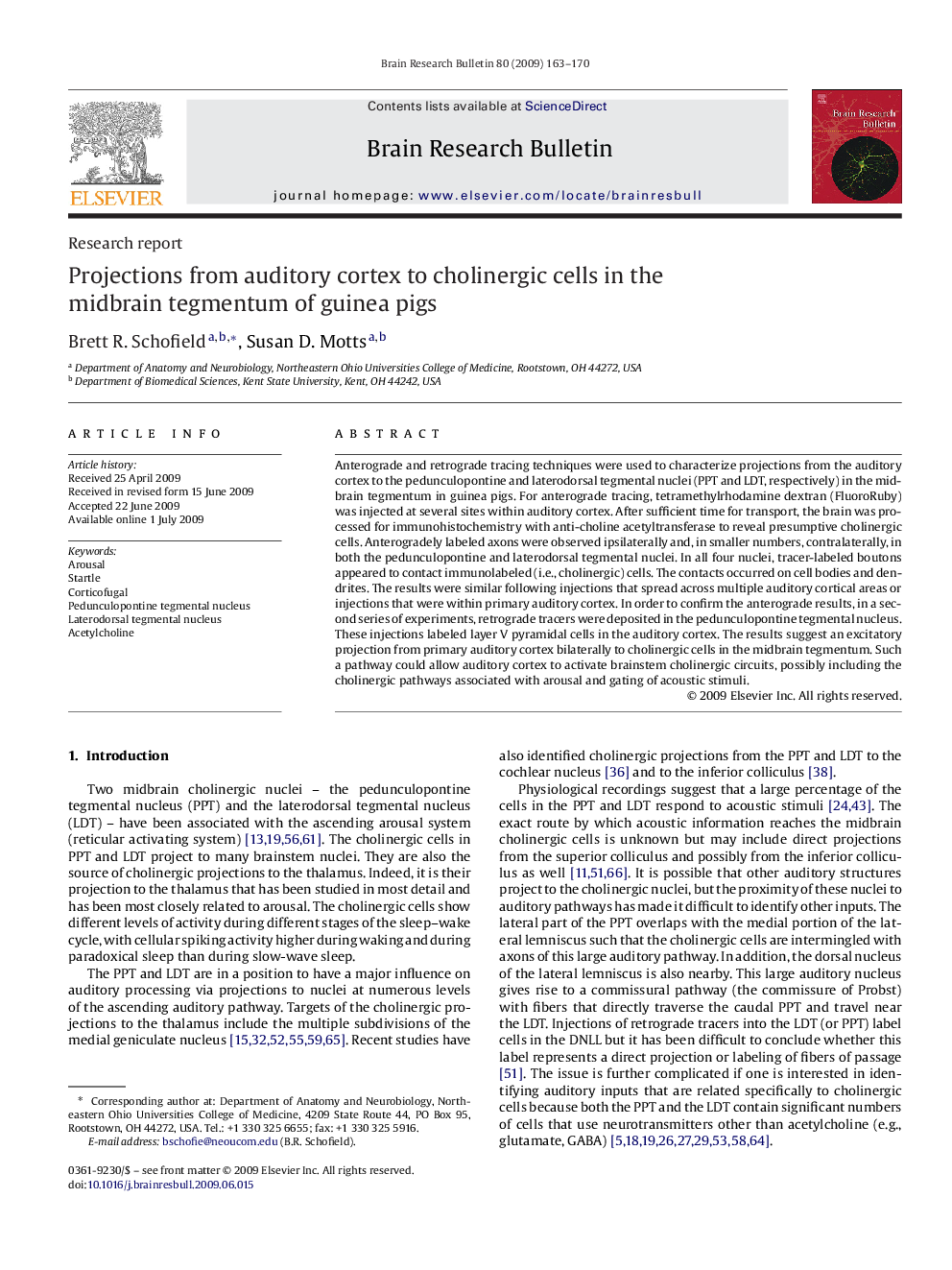| Article ID | Journal | Published Year | Pages | File Type |
|---|---|---|---|---|
| 4319612 | Brain Research Bulletin | 2009 | 8 Pages |
Abstract
Anterograde and retrograde tracing techniques were used to characterize projections from the auditory cortex to the pedunculopontine and laterodorsal tegmental nuclei (PPT and LDT, respectively) in the midbrain tegmentum in guinea pigs. For anterograde tracing, tetramethylrhodamine dextran (FluoroRuby) was injected at several sites within auditory cortex. After sufficient time for transport, the brain was processed for immunohistochemistry with anti-choline acetyltransferase to reveal presumptive cholinergic cells. Anterogradely labeled axons were observed ipsilaterally and, in smaller numbers, contralaterally, in both the pedunculopontine and laterodorsal tegmental nuclei. In all four nuclei, tracer-labeled boutons appeared to contact immunolabeled (i.e., cholinergic) cells. The contacts occurred on cell bodies and dendrites. The results were similar following injections that spread across multiple auditory cortical areas or injections that were within primary auditory cortex. In order to confirm the anterograde results, in a second series of experiments, retrograde tracers were deposited in the pedunculopontine tegmental nucleus. These injections labeled layer V pyramidal cells in the auditory cortex. The results suggest an excitatory projection from primary auditory cortex bilaterally to cholinergic cells in the midbrain tegmentum. Such a pathway could allow auditory cortex to activate brainstem cholinergic circuits, possibly including the cholinergic pathways associated with arousal and gating of acoustic stimuli.
Keywords
Related Topics
Life Sciences
Neuroscience
Cellular and Molecular Neuroscience
Authors
Brett R. Schofield, Susan D. Motts,
